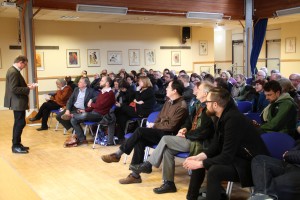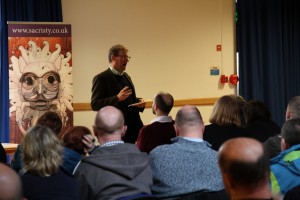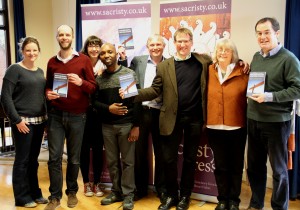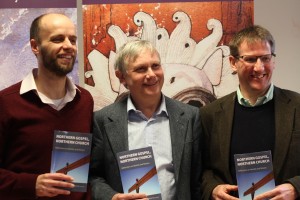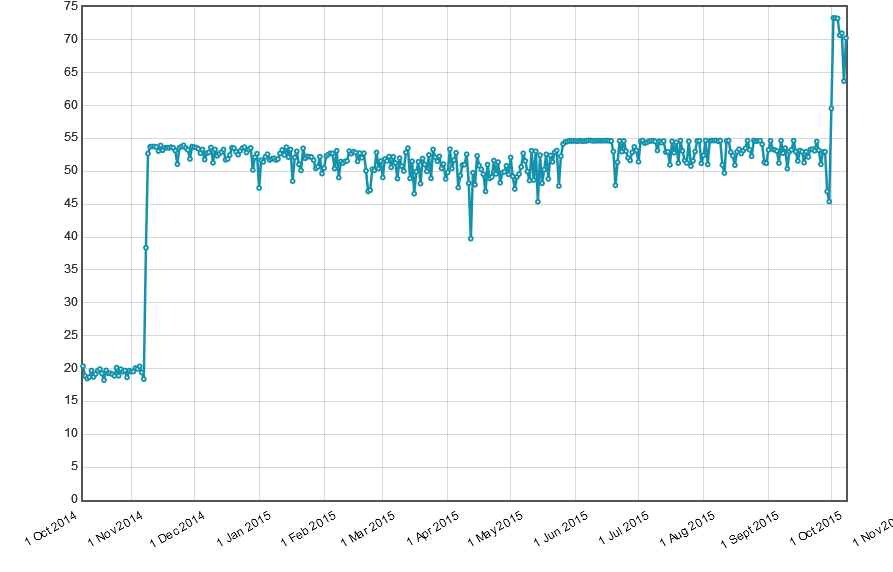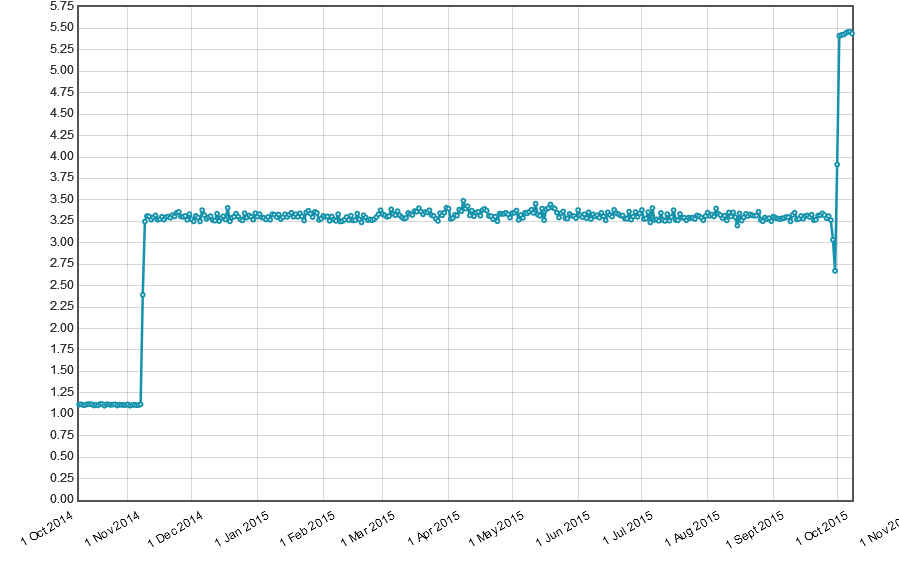
Just a quick shout out to LightReaders (www.lightreaders.com) who sent me a lovely e-mail, asking for permission to use this photo of mine (right) in their advertising this year. They “have presented Christian music with Biblical storytelling to numerous churches and organizations in Ohio for the past twelve years. We present for the Audience of One, only accepting freewill donations, often presenting free of charge, and operate on a shoestring budget.”
Very nice to be asked! They even asked if they had to pay (to which I answered no).
In general, I’m very happy for people to use my photos I put online, provided:
- They ask first,
- They don’t make a profit out of my photos (or at least, not without sharing some of it!),
- They give me a credit somewhere.

So a minor slap on the wrist to Trinity Churches of Shrewsbury for using my Growing Leaders Photo (left) on their course page without asking. There’s no doubt that it’s mine because the large version has my watermark on it (my initials – bottom left in this instance). I’m such a big advocate of CPAS’s Growing Leaders I’m haven’t complained (other than this post, I suppose). Actually I’m secretly chuffed that they wanted to use it. 🙂
I stopped visually watermarking my photos a while ago, as it was adding to much time to the workflow, but I always enjoyed working out how to put it in creatively.
I was also pleased to provide several photos recently for the website and prospectus of what is currently called the Yorkshire Ministry Course (the prospectus can be downloaded from the website) – you can try and guess which are mine if you want! By all acounts vicars are meant to have a hobby, and photography will do me just fine, thank you!
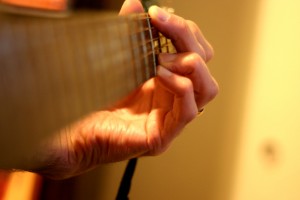 Prayer is the lifeblood of the church, and having discussed personal quiet times, it is worth thinking about corporate prayer – or prayer meetings. Sadly these can make the heart sink, at the thought of sitting in a cold, uncomfortable chair for 20 minutes in silence without 3 other people who are looking at their feet! However, there are many models of prayer that enable a group of people to pray in a way that is exciting, relevant, and powerful.
Prayer is the lifeblood of the church, and having discussed personal quiet times, it is worth thinking about corporate prayer – or prayer meetings. Sadly these can make the heart sink, at the thought of sitting in a cold, uncomfortable chair for 20 minutes in silence without 3 other people who are looking at their feet! However, there are many models of prayer that enable a group of people to pray in a way that is exciting, relevant, and powerful.
The nicknames of these models are not my own, they are how I have heard them referred to over the years.
I would say that the “ideal” prayer meeting blends together several of these different models, to keep things interesting, and would usually cover a variety of topics (even if there is a single theme for the meeting overall). An hour is a good starter – it sounds like a lot, but the time soon goes. You could run a schedule something like this:
- Welcome / Introduction (2 mins)
- Opening Worship (2 or 3 songs – 10 mins)
- Topic 1 – Introduction and Pray (6 mins)
- Topic 2 (6 mins)
- Worship Song (5 mins)
- Topic 3 (6 mins)
- Topic 4 (6 mins)
- Prayer Walk (10 mins)
- Worship Song (5 mins)
- Closing prayer (3 mins)
- Lord’s Prayer / Grace / Blessing (1 mins)
Topics can be specific items for your situation (Children’s work, local drug problems, upcoming mission event), bigger political issues (upcoming election, gay marriage), or global events/situations (e.g. Syria, persecuted Christians). It is good to have a mix of the global and local to help us remember we are part of a bigger body of believers.
I find that is always good to pray “for” something, rather than “against” it – so pray for peace and reconciliation, rather than against war. Praying against has its place, particularly in the spiritual warfare domain, but we also want to foster an attitude of love and respect to those who are also made in God’s image.
Worship
Worship (by which I specifically mean singing worship songs to God) is a foundational part of prayer. Intercession and worship go very close together. Worship is a form of prayer, and if we are in tune with God’s spirit (which singing helps with), our praying is likely to be closer to his heart. I believe the first part in prayer is to seek God’s heart and agenda. I’m not sure how you can start interceding without first spending time focussing on and adoring God, although of course this doesn’t have to involve music – I just find it particularly helpful.
It is also worth mentioning that most of the songs we sing in church are extremely scriptural – in many cases entire passages set to music. The Word of God is an integral part of prayer, and singing it (or saying it, or reading it) can only be a good thing.
YWAM
Best suited to a larger group of people, the principle is to split into two halves – one half of the room pray out loud together for a specific issue, the other half worship, usually to an up-tempo and “spiritual warfare” type song (“There’s a burning in my heart”, “We want to see Jesus lifted high”, “Lord you are calling (let your kingdom come)”.
After a couple of verses, the two halves swap, and the half that was singing start praying out loud, and vice versa. It helps if each half has a “leader” they are following, so they know if they should be singing or praying! This can just be someone at the front, facing everyone else, or the meeting leader can always pray and physically change sides.
As with all corporate prayer, there should be guidance from the leader as to what the topic of prayer is. To some extent, if you are all going to pray for different things you may as well be praying alone, and we know from the bible there is power in Christians standing together and agreeing with one another. It is also helpful if the topic is fairly specific, so everyone knows what they are praying for.
Also out loud means out LOUD – while not necessarily shouting, it is awesome when everyone prayers in a raised voice. Of course it depends on the topic, and quiet speaking may be more appropriate, but generally the louder the better.
There are two particularly good things about this model – Firstly, and this is a practical reason, it’s great for people who may not be very comfortable praying out loud. With half the room (and the band) belting out a song, no-one (except God) can hear what you’re saying! Secondly, the music really helps to keep things moving – you know you’ve only got a minute or two to pray for the given topic then you really get on with it, and don’t have to stress about running out of things to pray.
A variation on this model is to intersperse singing and praying, so every sings (perhaps the chorus), and then everyone prays out loud (perhaps while the band plays through a verse).
Korean
Similar to the above, except this time everyone is just praying out loud together. Again this is better suited to a larger group, otherwise it’s easy to get a bit self-conscious. That said, to be honest by the time there’s 5 or 6 of you, and everyone’s talking loudly, it becomes a blur and you can’t tell what anyone else is praying.
You probably only want a 5 minute slot maximum for this per topic, probably with some singing or silence thrown in between topics.
If you believe that the gift of tongues is still a gift for today (and I do), people who exercise this gift may find it easier to pour out their heart to God using words from their spirit rather than from their mind.
Silent Prayer
There is a strange power to a large run of people joining together in absolute silence to pray in their hearts, together. This model is best suited to repentance or sorrowful/awful situations, when words aren’t enough.
Prayer Walking
Some people find it really helpful to actually do something physical while praying. Getting up and walking about is a great way of keeping focussed and awake, and if you are praying for a particular neighbourhood, what better way then to so do walking around it?
This can either be inside your building (if it’s big enough) – either just wander around (e.g. praying for the activities that happen in each space, or groups that meet there), or have stations up with items, pictures, news clippings, stations of the cross, etc.
Prayer Tree/Stones/…
As a variation on the above, it can also be helpful to have some sort of craft activity associated with the prayer.
If you get hold of a small branch (that looks a bit like a tree), and “plant” it in a pot so it’s upright, then prayers can be written on “leaves” (leaf shapes cut out of paper), and attached to the branches of the tree. Alternatives are post-it notes on a board, ribbons tied a large cross, stones built into a cairn. The imagery is being used to paint a picture of how our individual prayers join together into a corporate whole, as well as providing an way to pray for those who like to do something a bit more tangible. Holy Communion is not a million miles away from this sor of prayer activity!
Another variation is a confessional exercise, where sins can be written on a piece of paper. The bits of paper are then burnt or shredded, as a sign of God’s forgiveness.
Hotseating
Slightly different form of prayer, and better suited to a small group setting.
Each person takes it in turn to sit (or stand) in the middle, while everyone else gathers around, ideally lays on hands, and prayers over the person in the middle. This often has prophetic elements to it, as people pray out loud and share any words or pictures they may feel are from God. Probably 5 minutes a person is plenty.
It’s worth considering having someone as a “scribe” too, to jot down the encourages and words each person receives, for their individual journals.
Football
Good for a youth group this one. The group sits in a circle, and the leader has a football (or cushion, or tennis ball, or …). The leader then throws the ball to a member of the group, who then prays a short prayer out loud, before throwing the ball on to someone else in the group.
If further guidance is needed, the “prayer on receipt” could be for
- An issue the recipient is facing
- General prayer for the sender
- General prayer for the next recipient
- A pre-determined topic
Psalms
The psalms are an amazing collection of prayers, adoration, lament, confession, repentance, and worship – and they lend themselves very well to being spoken (as you’d expect).
In particular, they can be spoken corporately as an antiphon. For example, one half of the group could say the odd verses, and the other the even. Or if there’s a natural response, like in Psalm 136, the split can be done in this way – maybe changing sides at each stanza. As with YWAM, it helps to have a designated “leader” for each half to follow.
The splits could be demographic too – so male/female, or young/old.
Out of the hat
Another smaller group one – everyone writes a prayer request on a slip of paper (anonymously or otherwise), and puts it in a “hat”. Each person then draws a slip out of that hat, and prays for that issue for a couple of minutes. Then the slips can back in, and everyone takes another.
The slips could also be pre-determined topics, or areas of ministry, or specific people, or even streets in the parish.
Finally…
The usual rules for prayer meetings apply – start on time and finish on time. Allow people to stay and pray/worship, but make it clear the meeting is over and everyone is free to go. It is always better to leave people wanting more – and however much they enjoyed it, if it over-runs then next time they will be more reticent about coming (“I really enjoyed it, but it was a late night”).
Also try and end it well – saying the Lord’s Prayer together, or the Grace, or having a blessing, or even the Peace all bring the meeting to a natural conclusion.
 If you attended a Christian Union (or equivalent) as a schoolchild or student, you will already be familiar with the concept – if not always the practice – of “Quiet Times”.
If you attended a Christian Union (or equivalent) as a schoolchild or student, you will already be familiar with the concept – if not always the practice – of “Quiet Times”.
What is it?
For those who aren’t familiar, the “Quiet Time” is a (ideally) daily exercise of taking some time out, and spending it intentionally with God. It usually involves elements such as worship, bible reading, prayer, journalling, meditation, and so on. Morning Prayer, Evening Prayer, and Night Prayer (or compline) are very structured way of doing this, required of all Church of England clergy as a part of their Daily Office. Compline is a particularly gentle way to end the day.
Less structured approaches include sitting in the study with a bible and a notebook and a cup of coffee, perhaps with a worship CD.
How to do it
It’s very simple – all you need is a bible (and sometimes not even that), and a little bit of quiet.
A really good tip is to have a bit of paper and a pen, to jot down those really important (but oh so distracting) thoughts that do pop into your head. “Ooo – I must remember to put butter on the shopping list” – fine, write down “butter” on your bit of paper, and then forget about until after your quiet time.
So, for a 10 minute “unstructured” quiet time, you could try the following:
- 1 minute in quiet settling down and clearing your mind. You could also use a worship song here.
- 2 minutes reading a short passage. A gospel or psalm chunks are good choices.
- 1 minute thinking about it – perhaps asking God if he wants to say anything, or just “being”
- 3 minutes praying to God. A good model is ACTS:
- A – Adoration. “God you’re great”
- C – Confession. “God, I did this, and I’m sorry. please forgive me.”
- T – Thanksgiving. “Thank you that I got on ok with a difficult colleague today”
- S – Supplication. “Please help the situation in Syria”
- 2 minutes writing down in your Journal anything that struck you about the passage, or particular prayers you prayed, or actions you need to take.
- 1 minute saying a short prayer of thanks, and ending.
Obviously any of these elements can be extended. You may be able to spend 10 or 15 minutes in worship if you have a CD that you particularly like. Or if you are halfway up a mountain you may spend much longer in the “being” phase, enjoying God’s wonderful creation.
The Daily Office liturgies mentioned above are a far formal setting (although can be done in 10 or 15 minutes), and broadly have this structure:
- Preparation
- Word of God (set readings from Psalms, OT and NT)
- Prayers (including set collect)
- Conclusion
The advantage is that all the work is done for you, and the lectionary (set readings) cover the whole bible over time.
In between these two approaches are “daily devotionals”. These are typically booklets lasting between a month and a quarter that have a usually have a short reading, a reflection/commentary, and a prayer every day (usually dated, e.g. “1st March 2013”). There are also masses and masses of these (e.g. at Eden Christian bookshop), and you are more or less gauranteed to find a flavour that suits your palate. I can particularly recommend Topz for 7-11 year olds.
Finally, you might like to consider setting 12 months aside to read the Bible in a year. My Bible in a year has readings from the Old Testament, New Testament, and Psalms every day, and in chronological (as opposed to canonical) order.
If you have a dated resource, you should decide in advance what you will do if you miss a day. You may decide to read every entry (and hence get “behind” – it’s pointless trying to catch up by doing 2 a day), or you may decide to always do “today’s” entry (and hence sometimes miss entries). I would generally recommend the latter, as it gets very disheartening to always be 2 weeks behind!
Why do it?
There is an awful lot of guilt about this practice, especially in evangelical circles, where it can sometimes seem like if you spend less than an hour in your QT each day then you’re somehow a failure. However my experience is that even 5 or 10 minutes makes a tangible difference to my mental state, attitudes, and holiness.
To misquote a famous saying, if I miss one quiet time then I notice, two and my family notices, three and the whole world notices.
If we are seriously about being followers of Jesus, and being transformed into his likeness, then we kind of need to know what he looks like!
“If we confess our sins, God is faithful and just to forgive us our sins and cleanse us from all unrighteousness” – 1 John 1:9
At Spring Harvest 2014 I was struck by something the speaker (Ness Wilson) said in the context of the above verse at the main Bible reading. She said that at her church they use this verse as a sort of general confession, but that there was a danger here that we would never confess specific sins, and therefore not really confess them at all. In her words (as I remember them), you can’t disown something until you’ve first owned it. We also can’t experience the freedom of being forgiven our sins until we have confessed them to God.
Without wanting to get into the whole area of confession, I think the protestant/reformed church has lost something important in its rejection of regular confession to the priest.
The truth is that sin is powerful and addictive. The truth is also that we don’t face up to our sin, look it square in the eye, and “own up”, we can’t truly repent and turn from it, and “disown” it. And it can feel very humiliating and painful to own up to our sins, but I believe this is the what the bible calls us to.
Ness Wilson has a particularly approach that I think sounds good, and obviously works well for her – which is in her daily devotion she writes down in her journal the specific sins she has committed as an act of confession. The times she has failed to be the human being God has made her to be, or fallen short of his image.
For instance (and these are my words):
“I have been short-tempered with the children today”
“I promised a friend I’d ring, but was too tired and busy to fit in the call”
By writing them down, we own up to them, admit to ourselves and God that we have not made the mark, and from that position we can confess them, and truly know the fogiveness and freedom of God’s grace. There’s no justification, or excuses. We just admit to ourselves and to God that we did bad (if you excuse the English!).
The only thing I would add is I would say that on-going, addicive or deep rooted sin needs a firmer hand. If, every day, we write “I looked at pornographic websites again last night” (or whatever), this needs dealing with. This needs confessing to another person who you trust and can meet with regularly – perhaps a church leader – who will hold you to account, suggest external sources of help, and if necessary remove you from public ministry while you seek healing. While we all are sinners, and will continue to be until glory, no Christian should be a slave to sin.
Another activity that’s good for youth group, but also cell group meetings, is the progressive psalm. It requires no significant extra preparation, but is a nice act of corporate worship.
It’s a bit like the game “Consequences“, except that a poem of worship to God is built, instead of a silly story.
As with everything else on this site, this isn’t my idea, and I take no credit for it – it is an exercise I have taken part in that I found to be a source of blessing and enjoyment. I struggle to identify where I first came across it as well! The Fresh Expressions website has a good explanation, and a original credit.
Progressive Psalms
It works best in a group of at least 5-8 people – if there’s more than this is it’s probably worth doing it in two groups. Each person will need a pen.
I think it’s always worth explaining to the group how the activity works – what the purpose is, what the steps are along the way (in overview), and what the result is.
Hand each person a sheet of A4 paper. These need to be divided into 8 horizontal sections, starting at the top – one way to do this is to hold the paper in portrait, then fold it in half taking the top to the bottom, and repeat twice. When unfolded again, there will be 8 sections separated by the creases.
- In the top section, each person writes write a short sentence of praise to God, e.g “Lord, I want to praise you”
- The paper is then folded backwards along the crease, so that what was written can’t be seen, and the paper passed to the person to the left.
- On their new piece of paper, each person writes something about God starting with ‘because’, e.g. “because you are holy beyond measure”
Fold and pass to the left again.
- Write something else about God’s character, begining with ‘and’, e.g “and you are worthy of all praise”. Fold and pass it on.
- Now write 2 things involving how wonderful God’s creation is. e.g. “Galaxies thousands of light years long are but a speck to you, you know the smallest ant by name” Fold and pass on.
- Next write something God does for you personally. e.g. “You fill me with your spirit.” Fold and pass.
- Last but one – write a personal message to Jesus with ‘because’ in the middle. e.g. “I thank you Jesus because you died for me”. Fold and pass.
- Finally, write a resolution – “therefore I give my life you every day.” Fold and pass last time
Now it’s the good bit – each person unfolds the bit of paper in front of them, and takes turns to read out loud their constructed psalm, while the rest of the groups listens, and hopefully worships and prays.
They can be collected at the end, and typed up to be e-mailed round the group, or individuals can just take them home.
 October 31st is an interesting day for the Church. How to engage positively with modern culture while still celebrating the Light? One approach is to subvert the festival to point in another direction altogether (i.e to Jesus).
October 31st is an interesting day for the Church. How to engage positively with modern culture while still celebrating the Light? One approach is to subvert the festival to point in another direction altogether (i.e to Jesus).
One possibility is to run a Light Party – a celebration of all that is light, with music, games, and sweets. The idea being it’s even better than dressing up as a zombie and going trick or treating!
Another approach is to carve a ‘Christian’ pumpkin – as illustrated here. There is a little poem that goes with it that is a sort of prayer, but also explains the symbolism. I take no credit at all for this! (And apologies if your browser renders it in Comic Sans; I’ve just said “cursive”).
I am a Jack O’ Lantern my light will shine so bright
For I am a Christian pumpkin my symbols tell what’s right.
My nose is like the cross on which our Savior died
To set us free from sin we need no longer hide.
My mouth is like a fish the whole wide world to show
That Christians live in this house and love their Savior so!
The story starts at Christmas my eyes are like the star
That shone on Baby Jesus and wise men saw from far
My color it is orange just like the big bright sun
That rose on Easter Day along with Gods’ own Son.
And so on Halloween Let’s set our pumpkins out
And tell the trick or treaters What Gods’ love is all about!
(via http://www.dltk-bible.com/a_christian_pumpkin.htm)




